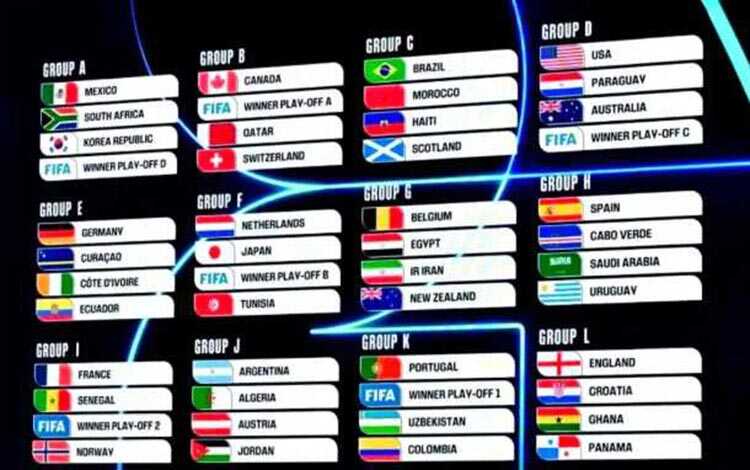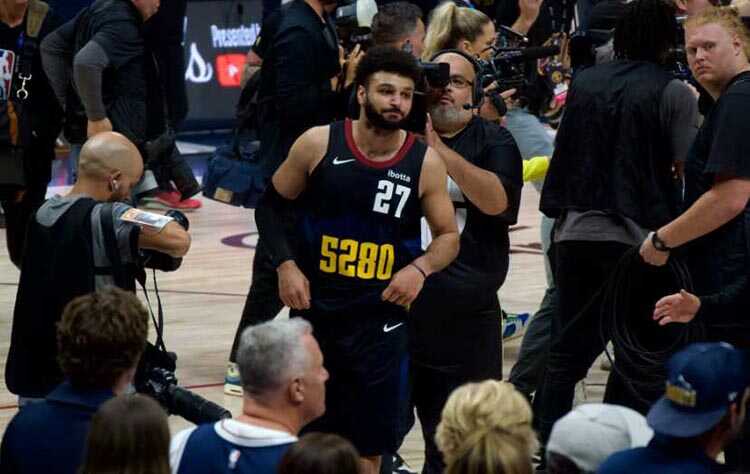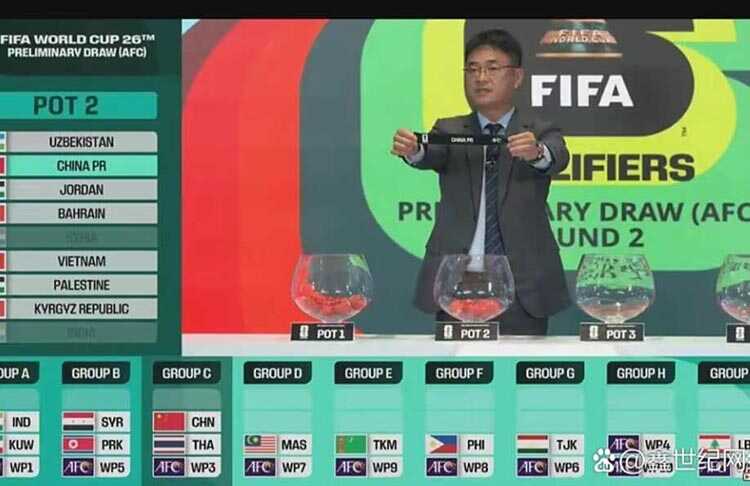开学前归纳系列七上七科知识点英语
七年级英语上册知识点
Starter unit 1 Good morning!
一.短语归纳:good morning 早上好 good afternoon 下午好 good evening 晚上好
name list 名单 an English name 英文名字
二.必背典句:Good morning, Alice! 早上好,艾丽斯!
Good afternoon! 下午好!
Hi, Bob! 你好,鲍勃!
Hello, Frank! 你好,弗兰克!
Good evening 晚上好!
—How are you? 你好吗?
—I’m fine, thanks. How are you? 我很好,谢谢。你好吗?
—I’m OK. 我很好。
三.英语中常见的问候语① Hello! “你好!”是比较随便、不分时间的一种问候语,通常用于打招呼、打电话。表示惊讶或引起对方注意。对方应答仍用 Hello!
② Hi! “你好!”的使用比 hello!更随便,在青年人中使用更为普遍。
③ Nice to meet you! “很高兴见到你!”Nice to meet you, too. 或者 Me, too“见到你很高兴”用于初次见面
④ How do you do? “你好!”用于初次见面,是非正式的打招呼用语。对方应答语应是“How do you do?”
How are you? 表示问候 意为“你好吗?”,为询问对方身体状况的问候语,应答语一般是“I’m fine. Thank you. / I’m very well. Thank you. / I’m OK.
四.大写字母的用法:
① 在英语中,句子的第一个单词的第一个字母都应大写。 Sit down, please. 请坐。
② 字母 I 作人称代词时,意为“我”,在句中任何位置都必须大写。日常用语“OK”在句中任何位置都大写。
I’m a student. 我是一名学生。 Is everything OK? 一切都好吗?
③ 人名、地名、国名、某国人或某种语言等专有名词的第一个字母都必须大写。
Lucy 露西 China 中国 Beijing 北京 Chinese 中国人
④ 表示月份、星期、重要节日的名词的第一个字母必须大写。
May 五月 Monday 星期一 New Year’s Day 元旦
⑤ 电影名、书名、报刊、文章的标题等中的每一个实词
(如:名词、动词、形容词、副词、数词)的第一个字母一般大写。
English Weekly 《英语周报》 Titanic《泰坦尼克号》
⑥ 某些缩略词的每一个字母都必须大写。
RMB 人民币 CCTV 中国中央电视台 PK挑战,对决
⑦ 表示职业、头衔和称呼的名词的第一个字母通常要大写。
Uncle Lee 李叔叔 Doctor Wang 王医生
Starter unit 2 What’s this in English?一.短语归纳:
in English 用英语 an orange 一个橙子 spell it 拼写它 a ruler 一把尺子
二.必背典句:—What’s this in English? 这个用英语怎么说?
—It’s an orange. 它是一个橙子。
—Spell it, please. 请拼写它。
—O-R-A-N-G-E. 若不知道答案, I’m sorry, I don’t’ know.
三.不定冠词 a / an 的用法 an 用在以元音因素开头的单词或者字母前
① 表示数量“一”。
a book 一本书 an egg 一个鸡蛋
② 笼统地指某人或者某物,但不具体说明。
There is a car in the yard. 院子里有一辆小汽车。
③ 泛指某一类人或事物。
A horse is a useful animal 马是有用的动物。
④ 表示首次提到的人或者食物(常用语介绍用语中)。
This is a key. 这是一把钥匙。
⑤ 表示某一类人或事物中的任何一个。
There is an elephant in the zoo. 动物园里有一头大象。
⑥ 用于抽象名词前,使抽象名词具体化,表示“一次、一种、一场”等。
It’s a pleasure to talk with you. 和你谈话很愉快。
⑦ 用于某些固定搭配中。
have a look 看一看 take a walk 散步 have a good time 过得愉快
Starter unit 3 What color is it?一.短语归纳:
What color 什么颜色 the key 这把钥匙
color the things 给物品涂色 the ruler 这把尺子 the cup 这个杯子
必背典句:
—What’s this? 这是什么?
—It’s V. 它是 V.
—What color is it? 它是什么颜色?
—It’s red. 它是红色的。
二.定冠词 the 的用法The 是定冠词,表示特指的人、物或群体,起作用有时相当于指示代词 this, that, these, those, 表示“这(个),那(个),这些,那些”。它可以用在名词前,表示特指说话双方的人或者上文中提到的人或者事物。
和个体名词的单数或者复数连用,表示某个(些)特定的人或事物。Give me the book.把那本书给我。
特指说话双方都知道的人或事物。Where is the ruler?尺子在哪里?
指上文中提到的人或事物。This is a pen. The pen is black. 这是一支钢笔。这支钢笔是黑色的。
用在世界上独一无二的事物前。 the sun 太阳 the earth 地球 the moon 月亮 the world世界
和某些形容词连用,表示一类人。 the old 老人 the young 年轻人 the poor 穷人
用在方位名词前。The east 东方 the west 西方
与 play 连用时,用在西洋乐器名词前。Play the piano 弹钢琴
与专有名词连用。The Great Wall 长城 The Summer Palace 颐和园
用在一些固定短语中。In the morning / afternoon / evening
三. color 的用法:color 作名词时,意为“颜色”,另外一种写法是 colour, 作动词时,意为“着色,上色”
Color the picture green 把那幅画涂成绿色。
Unit 1 My name’s Gina.一.短语归纳:
your name 你的名字 her name 她的名字 first name 名字 last name 姓氏
telephone /phone number 电话号码 in China 在中国
二.必背典句:—Nice to meet you! 见到你很高兴! —Nice to meet you,too. 见到你我也很高兴。
—What’s your name? 你的名字是什么? —Alan. 艾伦 / I’m Jenny 我是珍妮。
What’s his / her name? 他的/她的名字是什么? —Her name’s Mary. 她的名字是玛丽。
What’s your first/last name? 你的名字/姓氏是什么?
—What’s his telephone number ? 他的电话号码是多少? —It’s 876-9548. 是876-9548.
三.形容词性物主代词单复数
单数
复数
单数
复数
单数
复数
形容词性物主代词
my
our
your
your
He/her/its
their
名词性物主代词
mine
ours
yours
yours
He/hers/its
theirs
四.重点语法
1.be 动词用法
be 动词(am, is, are)这三个动词常用做连系动词,在句子中起连接主语和表语的作用。This is my mother. 这是我的妈妈。
I am nine. 我九岁了。
You are my good friend. 你是我的好朋友。
主语是第一人称 I(我)时,用am; 主语是第二人称 you(你,你们)或名词及代词的复数时,用 are;主语是第三人称单数 it / he / she(它/他/她)或名词及代词单数时,用 is.
am , is, are 的意思是“是”,但不能处处翻译成“是”。例,How are you? 你好吗?
2.What 引导的特殊疑问句英语中用于提出疑问的句子叫疑问句,以 what 等特殊疑问词开头的句子叫特殊疑问句,用法如下:
询问姓名,—What’s your name? 你的名字是什么? —Alan. 艾伦。
询问某物用英语怎么说。 —What’s this in English?—It’s a telephone. 这是一部电话。
询问电话号码。—What’s your telephone / phone number? 你的电话号码是多少?—It’s 563-4789. 是 5634789.
3.基数词的用法1.表示数字、年龄、日期等,在剧中可作主语、定语和表语。
—What’s two and five? 二加上五等于几? — Seven. 七 (表示数字)
—How old is it ? 它几岁了?
(表示年龄)
—What’s the date today? 今天几月几日?
(表示日期)
—It’s four. 它四岁了。
—It’s October 3. 10 月 3 日。
2.表示编号。 Lesson One 第一课 Unit One 第一单元
3.表示号码。如电话号码、门牌号、身份证号等,按单个基数词读出。0 可以读成字母 o的读音或 zero,相连的相同两位数可以读成 double(双写的)+基数词。 8272-5533
4.表示时刻 。 8::00 = eight o’clock 8点钟
四.汉语名字在英语中的写法中国人名是姓在前,名在后。姓和名的首字母都要大写且中间空一格,若名为两个字,中间不加空格,只需第一字的首字母大写。 例, Zhang Ling 张玲Liu Yifei 刘亦菲
Unit 2 This is my sister.一.短语归纳:
have a good day 过得愉快 a photo of …… ……的照片 in the first photo 在第一张照片上
in my family 在我的家庭里家福
the n ame of ……的名字 a photo of my family 一张我的全
family tree 全家福(家族关系图) family photo 全家福
二.典句必背:That is my family. 那是我的家庭。
Those are my parents. 那是我的父母。
These are my brothers. 这些是我的兄弟。
—Who’s she? 她是谁? —She’s my sister. 她是我的姐姐(妹妹)。
This is my sister Kate. 这是我的妹妹凯特。
—Nice to meet you , Jane. 见到你很高兴。 —Nice to meet you, too. 见到你我也很高兴。
—Are those your parents? 那是你的父母吗? —Yes, they are. 是的,他们是。
Well, have a good day! 好吧,祝你们过得愉快!
Hi, I’m Jenny. 嗨,我是珍妮。
Hi, my name is Paul. 嗨,我叫保罗。
Here is a photo of my family. 这里有一张我的全家福。
三.指示代词 this, that, these, those “这个,那个,这些,那些”
this 和 these 是指距离说话人较近的人或者事物;that 和 those 是指离或华人较远的人或者事物。
指示代词 this, that 作主语时, is 名单;当 these, those 作主语时, are 名复
在回答主语是 this 或 that 的一般疑问句或特殊疑问句时,在答语中用 it 代替句中的 this 或者that。当回答 these 或 those 作主语的一般疑问句或特殊疑问句时,在答语中用 they 代替句中的 these 或 those。
介绍某人时,用 this 或 that,而不用 he 或 she.
打电话时,说自己是谁用 This is… 问别人是谁用 Who’s that?
四.如何将单数句子变为复数1.指示代词的变化:this 变为 these,that 变为 those
2.人称的变化:第一人称 I 变为 we,you 不发生变化,he / she / it 变为 they.
I am a teacher.我是一位老师 → We are teachers. 我们是老师。
3.be 动词的变化:am 或 is 变为 are。
Is she your sister? 她是你的妹妹吗? → Are they your sisters? 她们是你的妹妹吗?
4.可数名词的变化: 可数名词的单数形式变为复数形式
Here are two nice photos of my family.这有两张好看的我的全家福。此句为倒装句,正常的语序应该是“Two nice photos of my family are here”
当句子以 here, there 等词开头时,要用倒装句,即“Here / There+谓语动词+主语(名词)”。其中谓语动词的形式要看后面主语而定,后面主语是复数,谓语动词要用复数,后面主语是单数,谓语动词也要用单数。 例:Here is the news. 这里有一条消息。
Unit 3 Is this your pencil?一.短语归纳:
pencil box 铅笔盒 excuse me 打扰了 thank you 谢谢你笔
the blue pen 这支蓝色的钢
Anna’s book 安娜的书 ID card 身份证游戏
school ID card 学生证 computer game 电子
in the school library 在学校图书馆电子邮件
a sk…for …向…要… e-mail sb 给某人发
call sb 给某人打电话 lose sth 丢失某物 find sth 拾到某物 a set of keys 一串钥匙
lost and found 失物招领
二.典句必背:—Is this your pencil? 这是你的铅笔吗? —Yes, it is. 是的,它是。
—Is that your schoolbag? 那是你的书包吗?
It’s mine / his / hers. 这是我的/他的/她的。
They are hers. 它们是她的。
Is that yours? 那是你的吗?
What about this dictionary? 这本字典呢?
Thank you for your help. 谢谢你的帮助。
How do you spell it? 你怎么拼写它?
I must find it. 我必须找到它。
Call me at 685-6034. 请打电话 685-6034 找我。
三.重点语法1.含 be 动词的一般疑问句1.将含有 be 动词的陈述句转换一般疑问句
—No, it isn’t. 不,它不是。
将 be 动词(am, is, are)提到句首(首字母要大写),如果原句中的主语是第一人称要变为第二人称,句末加问号。 例:I am Zhang Yang → Are you Zhang Yang? That is my
bike → Is that your bike?
2.含有 be 动词的一般疑问句: 肯定回答:Yes,主语+be. 否定回答:No, 主语+be not.
例:—Is this your pen? —Yes, it is / No, it isn’t.
2.I must find it. 我必须找到它。must 情态动词,意为“必须,应当,一定”,must do sth 表示义务、命令、或必要。例:You must be here on time. 你必须按时来这儿。
must 的否定形式是 mustn’t= must not , 含有 must 的一般疑问句是把 must 提至句首,其肯定回答时 yes,sb must; 否定回答:No, sb needn’t.
例:—Must I speak English? 我必须讲英语吗?
—Yes, you must. 是的,你必须。 —No, you needn’t. 不,你不必。
3. a set of keys 一串钥匙a set of 意为“一套,一组,一列”,a set of +复数名词作主语时,谓语动词用单数!!例:The set of keys is Tom’s. 这串钥匙是汤姆的。
Unit 4 Where’s my schoolbag?一.短语归纳:
on the sofa 在沙发上
in the schoolbag 在书包里
under the bed 在床底下
come on 快点
be tidy 整洁的
tape player 录音机
model plane 飞机模型
have a clock 有一个时钟
二.必背典句:Where is my pencil box? 我的铅笔盒在哪?
Where are my books? 我的书在哪?
It’s under your bed. 它在你的床底下。
Come on, Jack. 快点儿,杰克。
I think it’s in your grandparents’ room. 我认为它在你(外)祖父母的房间里。
I don’t know. 我不知道
I’m tidy. 我是爱整洁的人。
三.重点语法1.介词短语介词短语的构成:介词 the / 物主代词/名词所有格 名词等。
behind the door 在门后面
on his desk 在他的书桌上;in the teacher’s room 在老师的房间里
表示方位的介词:on, in, behind, between, under 等。
on 在……上面(紧贴着某物,有面的接触)in 在……里面;behind 在……后面;between 在……之间, 常于 and 连用;under 在……的下面。
2.Where 引导的特殊疑问句由 where 引导的特殊疑问句意在询问人或者物品所在的位置例:
1.—Where is my eraser? —It’s on the desk. / On the desk.
2.—Where are the keys? —They are under the bed. / Under the bed.
3.I think it’s in your grandparents’ room. 我认为它在你(外)祖父母的房间里。
变否定句:I don’t think it’s in your grandparents’ room..
当主语是第一人称,think 表示“看法”,其后接宾语从句时,若宾语从句表示否定意义,在形式上应该否定前面的主句,这种现象叫否定转移。
(误)I think he is not a teacher.
(正) I don’t think he is a teacher. 我认为他不是一位老师。
Unit 5 Do you have a soccer ball?一.短语归纳:
soccer ball 英式足球
a tennis bat 一个网球拍
play basketball 打篮球
baseball bat 棒球棒
play sports 进行体育运动
watch TV 看电视
on TV 电视上
in my bag 在我的包里
be late 迟到
二.重点短语
1.Let’s=Let us 让我们……吧。
2.That sounds good. 主语 系动词 表语
3.—Do you have a ruler? —Yes, I do. / —No, I don’t.
4.play the 乐器,play 球类运动名词
5.It be 形容词 for sb to do sth 做某事对某人来说是……的
It easy for me to play ping-pong. 打乒乓球对我来说是简单的。
Unit 6 Do you like bananas?
一.短语归纳:
John’s birthday dinner 约翰的生日晚餐
next week 下周
think about 思考、考虑
how about 怎么样
some fruit 一些水果
his birthday 他的生日
sport star 体育明星
eating habits 饮食习惯
for breakfast/ dinner 作为早餐/晚餐
one last question 最后一个问题
healthy food 健康的食品
二.重点句型:
have sth 吃……
—Do you like…? 你喜欢…吗? —Yes, I do / No, I don’t. 是的,我喜欢/不,我不喜欢。
—Does she / he like…? 她/他喜欢…吗? —Yes, she / he does. —No, she/ he does’t
I like/ don’t like… 我喜欢/ 我不喜欢…
like … for breakfast / lunch / dinner 早餐/午餐/晚餐喜欢…
want to do sth 想要做某事
三.典句必背
I like hamburgers. 我喜欢汉堡包。He likes ice-cream. 他喜欢冰激凌。四.重点语法:
A:名词分为可数名词与不可数名词两类。可数名词有复数形式,不可数名词一般没有复数形式。
① 可数名词单数变成复数一般在词尾加-s。 book→books bag→bags以 s,x, ch, sh 结尾的名词,一般在词尾加-es。class→classes以“元音字母+y”结尾的名词,在词尾加-s. boy→boys以“辅音字母+y”结尾的名词,先将 y 变为 i,再加-es。family→families 5.以 f 或 fe 结尾的名词,变 f 或 fe 为 v,再加-es. knife→knives一些以字母 o 结尾的名词变复数时有的加-es 有的加-s Negro(黑人)→Negroes hero→heroes (英雄) tomato→tomatoes (西红柿)potato→potatoes(土豆) photo→photos (照片)不规则变化 man→men tooth→teeth(牙齿) child→children
② 不可数名词:用“计量单位词+of 短语”表示,其数量通过 of 前面的名词来体现出来。
a glass of water 一杯水 two glasses of water 两杯水
two cups of tea 两杯茶 a piece of bread 一片面包
a cup of tea 一杯茶
two pieces of bread 两片面包
③ 还有一类词既可作可数名词又可作不可数名词, 如:orange(橘子汁,不可数)→ oranges(橘子,可数)
chicken(鸡肉,不可数)→chickens(小鸡,可数)
B:want 的用法:want 意为“想要、需要”
①want sth 想要某物。I want an apple.
② want to do sth 想要做某事。I want to eat an apple.
③ want sb to do sth. 想要某人做某事。I want you to help me.
like 的用法:like 及物动词,喜欢,后加名词或代词的宾格做宾语。
① like sb / sth. 喜欢某人/某物。 I like this pen.
② like to do sth. 喜欢做某事。 She likes to play with her friends.
③ like doing sth.喜欢某事。 He likes playing the guitar. 他喜欢弹吉他。
Unit 7 How much are these socks?一.短语归纳:
how much 多少钱
seven dollars 七美元
white bag 白色的包
clothes store 服装店
skirts in red 红色的裙子价!
twenty yuan 二十元
at very good prices 以很低的价格
for boys 对于男孩子
twenty-eight dollars 28 美元
Big Sale! 大降
a pair of black shoes 一双黑色的鞋子
二.重点句型:
①—how much is/are …? ……多少钱?
② I’ll take it. 我买了。
③ in+颜色 某种颜色的衣服。
—It’s /They’re … 它/它们……
④ What color do you want? 你想要什么颜色的?
⑤ buy sth from sb. 从某人那买某物。
⑥ sell sth to sb. 把某物卖给某人。
⑦ Here you are. 给你。
三.典句必背:
①—How much is the hat? 这顶帽子多少钱? —It’s five dollars. 5 美元。
②—How much are these socks? 这双短袜多少钱? —They’re two dollars. 两美元。
③—Can I help you? 我能帮您吗
④ Here you are. 给你。
⑤ I’ll take it. 我买了。
—Yes, please. 好的。
⑥ —Thank you.谢谢。 —You’re welcome. 不用谢。
四.重点语法:
A:基数词,表示数目或者数量的多少。① one 到 twelve
② thirteen 到 nineteen,表示“十几”,在个位数后加后缀-teen,读作/ti:n/。其中要注意 thirteen, fifteen 和 eighteen 的拼写。
① twenty 到 ninety,表示“几十”,以-ty 结尾,但需注意下面几个词的拼写:twenty, thirty, forty, fifty, eighty。
② 21~29 直到 91~99,表示“几十几”,用整十位加个位数表示,中间用连字符“-”把十位数与个位数连接起来。21 twenty-one 35 thirty-five
③ one hundred 意为“一百”,表示一百还可以用 a hundred . 要表示 200~900,用“具体数字+
hundred”。 200 two hundred 900 nine hundred
B:提问价格:how muchWhat is the price of +主语 无论主语是可数名词单复数还是不可数名词,其 be
动词都是 is。
提问数量:how much 不可数名词; how many 可数名词复数形式。
C:help 的用法:help 做动词,意为“帮忙,帮助”,常用结构为 help sb to do sth =help sb with sth. 帮助某人做某事。
My teacher helps me with my homework 我的老师帮我辅导家庭作业。
Tom often helps his father (to) clean the garden. 汤姆经常帮他爸爸打扫花园。其他用法:① help! “救命”
②help sb with sth 帮助某人做某事。 Lisa often help me with my English.
③help oneself (to) “自便,随便(吃/喝……)
Come on, boys. Help yourselves to some juice. 来,孩子们,随便喝些果汁。
④can’t help doing sth. “忍不住做……” Kate couldn’ t help crying when she won the match.
⑤作名词,意为“帮助”是不可数名词。 Tony needs some help. 托尼需要一些帮助。
D:need 的用法:①need 做实义动词,有人称和数的变化
They don’t need our help. 他们不需要我们帮助。
Jim’s bike is broken. He needs to buy a new one. 吉姆的自行车坏了,他需要买辆新的。
②need 做情态动词时常用于否定句和疑问句中,后接动词原形,无人称和数的变化,可以直接加 not 构成否定句,也可直接提到句首变为一般疑问句。
You needn’t worry about that. 你不必为此担心。
Need we finish the work before Saturday?我们有必要周六前完成工作吗?
E:come 的用法:come to do sth 来做某事。后接地点名词时,需加介词 to;后接地点副词时,则要省略介词 to。例: He comes to school early every day. 他每天很早来上学。(school 是地点名词)
Please come here before 10:00. 请 10 点前来这儿。(here 是地点副词)
F:buy 的用法:buy sth. 例句:I want to buy some apples.我想买点苹果。
buy sb sth/ buy sth for sb “给某人买某物”
My mother buys me new clothes every year.
= My mother buys new clothes for me every year. 我妈妈每年给我买新衣服。
G:sell 的用法:sell sb sth = sell sth to sb 意为“卖某物给某人”
They are going to sell me their books.=They are going to sell their books to me.
Unit 8 When is your birthday?一.短语归纳:
happy birthday 生日快乐
how old ……多大年纪
in August 在八月
see you 再见
English test 英语测试
school trip 学校郊游
basketball game 篮球比赛
art festival 艺术节
have an English party 举办一次英语聚会 ⑩have a good time 玩的愉快
二.重点句型:
①— when is …birthday? (谁)的生日是什么时候?
—It’s+月+日+年. 是……年……月……日。
②— How old be+主语?……多大年纪?
—主语+be+基数词. ……岁。/ … year(s) / month(s) / day(s) old. ……岁.
③happy +节假日 ……快乐
④how about +人称代词宾格 ……怎么样
三.典句必背:
①— When is your birthday, Linda? 琳达,你的生日是什么时候?
—My birthday is on October 2nd 。 我的生日是在 10 月 2 日。
②—Hi, Alan. Happy birthday! 你好,艾伦。生日快乐!
—Thank you, Bill. 谢谢你,比尔。
③Well, do you want to come to my birthday party? 噢,你想来参加我的生日聚会吗?
④—How old are you,Grace? 格蕾丝,你多大了?
—I’m twelve. 我 12 岁了。
⑤How about you and Tom? 你和汤姆呢?
⑥We have an English party on November 30th. 我们在 11 月 30 日举办一次英语聚会。
四.重点语法:
1.序数词:表示事物的顺序的数次
序数词的构成:
①第一、第二、第三,无规律可言
②第四至第十九均在相应的基数词后加-th fifth, twelfth, eighth,ninth。
③整十的序数词是把对应的基数词的最后一个字母 y 变为 ie,再加-th。
④表示“几十几”大的基数词变成序数词是,只将个位数变为序数词,十位数不变
序数词的用法:
①序数词前一般要加定冠词 the 表示顺序。
②当名词前已有物主代词等限定词时,则不再用 the. Her fourth birthday. 她的第四个生日。
③表示英语中的分数时,分子用基数词,写在前面,分母用序数词,写在后面。当分子超过1 时,分母的序数词后要加“s”。 1/3 one third 2/5 two fifths
④序数词前有时也可用不定冠词 a/an,这时不再表示在具体范围内的“第几”,而是表示在原有基础上的“又一个,再一个”。 I think I must do it a second time. 我想我必须再做一次。(已做过一次)
⑤表编号,“名词 基数词”=“the+序数词+名词” Lesson Five=the fifth lesson 第五课
2.名词所有格:表示人或者物的所有及所属关系
1.’s 所有格的构成:
①一般情况下,在单数名词的词尾加’s Jim’s book
②以-s 或-es 结尾的复数名词在词尾加“ ’” the students’basketball 学生们的篮球
③不以-s 结尾的复数名词在词尾加’s。 Children’s Day 儿童节
④表示两者或两者以上的人共同拥有某人或某物时,其名词所有格形式为:名词+ and+名词’s。
Tom and Jim’s teacher 汤姆和吉姆的老师
表示两人各自拥有不同的人或者物时,其名词所有格为:名词’s+名词’s Tom’s and Jim’s teachers 汤姆的老师和吉姆的老师。
3.of 名词所有格的构成:“名词+of+名词”
a picture of my family 我的一张全家福 a map of China 一张中国地图
4.双重所有格:
a friend of my sister’s 我妹妹的一个朋友
5.英语中日期的表达方法:①美式英语的表达法:
1998 年 2 月 1 日 February 1/1st,1998 读作 February first,nineteen ninty-eight
②英式英语表达法:
1998 年 2 月 1 日 1/1st February, nineteen ninty-eight
Unit 9 My favorite subject is science.一.短语归纳:
①favorite subject 最喜欢的学科
②P.E. teacher 体育老师
③play games 玩 游 戏
④the next day 第二天
⑤on Monday 在星期一
⑥have math 上数学课
⑦have an art lesson 上一节美术课
⑧for two hours 两个小时
二.重点句型:
①play games with sb. 和某人玩游戏。
②like to do/doing sth. 喜欢做某事。
三.典句必背:
①—What’s your favorite subject? 你最喜欢的科目是什么?
—My favorite subject is science. 我最喜欢的科目是科学。
②—Why do you like music? 你为什么喜欢音乐?
—Because it is fun. 因为它有趣。
③When is your math class? 你什么时候上数学课?
④At 8:00 I have math. 在八点我上数学课。
⑤Thank you for your e-mail. 感谢你的电子邮件。
四.重点语法:
1.特 殊 疑 问 句 :
是 对 句 子 中 的 某 一 部 分 内 容 提 出 疑 问 的 问 句 , 是 指 以what,who,when,where,why,how 等开始的疑问句。特殊疑问句与一般疑问句不一样,它不能用yes 或 no 回答。
① 结构:疑问词+一般疑问句(语序)?
② 疑问词小结:
2.什么都要问的 whatWhat grade is she in? 她在几年级?
What color is your bag? 你的书包是什么颜色的?
3.谁见谁爱的 whoWho do you want to help? 你想帮助谁?
当 who 作主语时,句子要用陈述语序,谓语动词多用单数形式。Who likes playing basketball? 谁喜欢打篮球?
4.一探究竟的 why
询问原因,回答时多用连词 because 引导的句子,意为“因为……”。
—Why do you like P.E.? 你为什么喜欢体育?
—Because I think it is very interesting? 因为我认为它很有趣。以 why 开头的否定疑问句多表示建议或请求。
Why don’t you go to work a little earlier? 你为什么不早点上班?
form...to...意为“从……到……”既可指时间又可指空间
form Monday to Friday 从周一到周五
form Beijing to Shanghai 从北京到上海
5.finish 的用法finish doing sth. 表示“做完某事,完成某事”
Jim usually finishes doing his homework before 8:00. 吉姆通常在 8 点前做完作业。
6.thank sb for 的用法:因……而感谢某人”
Thank him for telling me. 谢谢他告诉我。
Thank you for helping with my English.多谢你帮我学英语。
for two hours 的用法:
“for+一段时间”是介词短语,意为“……时间”,表示某事持续多长时间。对其提问要用how long。
—How long will you stay in Beijing? 你将在北京待多长时间?
—For about three days. 大约三天。
本站声明:以上部分图文视频来自网络,如涉及侵权请联系删除
-
卫冕冠军阿根廷前景:梅西退役后,新阵容能否打破60年魔咒
梅西,阿根廷 2026-01-13
-
2026世界杯夺冠赔率解析:西班牙、英格兰为何被高看?
世界杯 2026-01-13
-
如何为孩子选择适合的冰雪运动入门项目?
冰雪运动 2026-01-11
-
AI如何改变2026年世界杯的转播与观赛体验?
世界杯 2026-01-11
-
贾马尔·穆雷距离全明星还有多远?2026前景分析
贾马尔·穆雷 2026-01-11
-
切特·霍姆格伦2026年能否首次入选全明星?
切特·霍姆格伦 2026-01-11
-
2026世界杯门票购买全攻略:预售时间、价格区间与申请流程预测
世界杯 2026-01-11
-
美加墨世界杯对亚洲球迷的“时差挑战”:如何安排观赛时间
世界杯 2026-01-11
-
运动手环新功能:如何利用HRV数据优化训练?
运动手环 2026-01-10
-
BCL亚洲冠军联赛2026参赛球队巡礼
亚洲冠 2026-01-10
